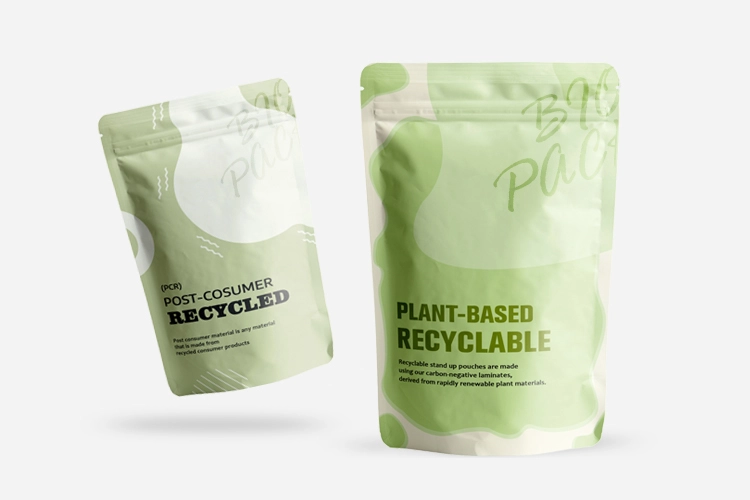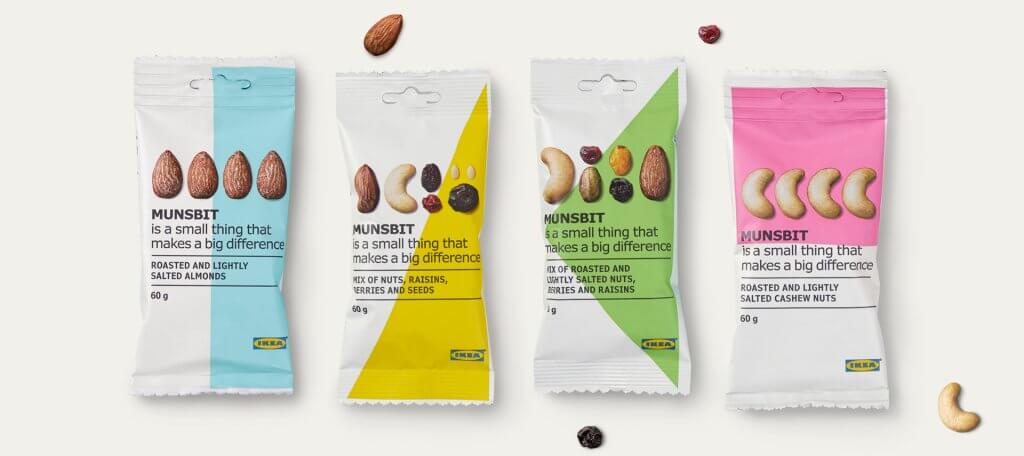In an era where going green is the catchphrase of the day, the food industry is being revolutionized. Recyclable food packaging is the solution to ending the fight against packaging waste, and it’s redesigning the way we envision food products and how they impact the planet. This article will explore why food packaging that is recyclable is important, where the market is currently at, and how it can help the planet and businesses too.

The Growing Need for Recyclable Food Packaging
The amount of food industry packaging waste is astronomical. According to statistics from the United Nations Environment Programme, the packaging sector accounts for approximately 40% of the global plastic waste, and food packaging accounts for a gigantic portion of that figure. In the United States alone, according to the EPA, in 2021 food packaging accounted for approximately 20.8 million tons of municipal solid waste.
Historical non-reusable packaging materials, such as single uses of plastic, end up in landfills, oceans, and other natural preserves, endangering wildlife life and health and damaging the environment.
Recyclable material-made food packages have the potential to offer a realistic alternative. Recycling material used for food packaging reduces virgin raw material demand and reduces the amount of material sent to landfills. With customers becoming more eco-conscious, they are increasingly demanding products with reusable packaging.
Recent National Retail Federation research found that 75% of shoppers would be more inclined to purchase a food item if it comes with recyclable packaging. This new consumer behavior is making food businesses rethink their packaging strategies.
Types of Recyclable Food Packaging Materials
Some food packaging materials can be recycled. One of the most well-known is cardboard and paper. They are very recyclable and can be recycled to produce boxes, cartons, and labels on food products. They are also typically made from renewable materials, so they are a green material. For example, it is not uncommon for cereal boxes to be made of recycled cardboard.
Actually, the paper and cardboard recycling rate in America was around 68.2% in the year 2020, according to the American Forest & Paper Association. This high recycling level means that even most paper-type food packaging is recyclable to produce new material. The ink used for print on such packs usually utilizes soy-based inks, which are more environmentally friendly.
Yet another widely popular material that is being recycled is glass. Glass packing not only qualifies as recyclable but also possesses excellent protective capabilities for foodstuffs, being light and non-permeable, and helps ensure the quality and freshness of the food within. Jams, sauces, and certain drinks are packed in glass jars and bottles. In the EU, in 2020, glass recycling was as much as 77.6%. A recycling level so high guarantees that glass can be recycled endlessly without a decrease in quality, thereby reducing the need for manufacturing fresh glass and the associated energy consumption.
Plastics are utilized in reusable food packaging, but there is a requirement for separating different types. High-density polyethylene (HDPE) and polyethylene terephthalate (PET) are among the most common plastics to be recycled. HDPE is applied in the manufacture of milk jugs and detergent containers, and PET is applied in the production of water bottles and some food packaging.
Recycling of PET bottles in the United States was at 29.1% in 2020, according to statistics from the Association of Plastic Recyclers. If properly recycled, these plastics can be re-manufactured into new products, eliminating the requirement for virgin plastic production. However, it is worth noting that the general plastic recycling rate in the US is still fairly low compared to other materials, highlighting the importance of plastic recycling infrastructure development.

Benefits of Recyclable Food Packaging for Businesses
Having recyclable packaging is not only beneficial to the environment; it also has some benefits for food businesses. To begin with, it can make a company appear more attractive. In a competitive market, consumers are more likely to purchase brands that care about sustainability.
A study by Cone Communications found that 87% of consumers will purchase a product because a company had backed an issue that is important to them, and environmental sustainability is high on many consumers’ lists. By using recyclable packaging, food businesses can win over environmentally-aware consumers and build brand loyalty.
Secondly, it can save costs in the long run. Although the initial expense of employing recyclable packaging materials is sometimes higher, waste reduction benefits and government incentives for environmental conservation can offset such expenses.
Some municipalities, for example, offer lower waste collection charges to companies that recycle most of their packaging waste. In some places, companies are able to make up to 30% of wastage disposal costs savings through having effective recycling programs in place for packaging foods.
Challenges and the Way Forward
Despite numerous benefits, recyclable food packaging has accompanying challenges. For starters, proper recycling infrastructure is not established in most geographies. Less than 10% of waste packaging is being recycled in a few less developed nations because they do not have enough recycling plants and also lack awareness. In the lack of an efficient recycling system, even the most recyclable packing material ends up in a landfill.
Moreover, there must be good consumer education about how to recycle food packaging material efficiently. Some of the food packaging can only be recycled under specific handling, and without this awareness among consumers, recycling becomes affected.
Despite all this, the future for recyclable food packaging is bright. Governments, industries, and consumers are becoming increasingly aware of recycling importance, and attempts are being made to enhance recycling infrastructure as well as raise consumer awareness.
Conclusion
Let’s join hands to help make recyclable food packaging become a norm. As customers, we can choose products with recyclable packaging where available and recycle them properly. Food manufacturers must continue to invest in research and development to discover more innovative and cost-effective recyclable packaging solutions.
Together, we can create a greener world for the food sector and the world. Let’s make food packaging recyclable, not an exception!
